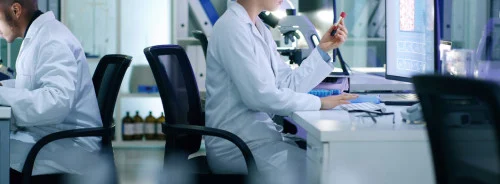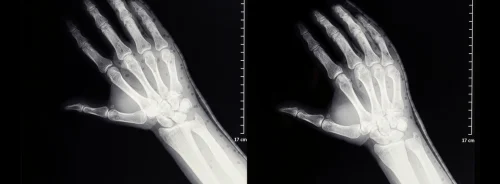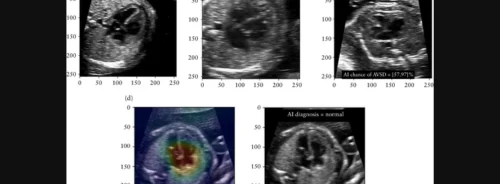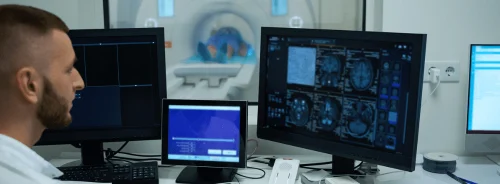HealthManagement, Volume 6 - Issue 5, 2006
New Ways to Manage and Access Information
Author
Dr Jarmo Reponen
Chief Radiologist
Dept. of Radiology
Raahe Hospital
Raahe, Finland
The development of wireless networks and terminals has made mobile connections to image archive and communication systems (PACS) a reality. This access is now possible outside the fixed hospital network and even outside the physical hospital boundaries. This article explores the benefits of new terminal devices as well as current limitations, and how mobile image acquisition can result in a real virtual hospital.
The modern medical record can be conceived of as a portal, which can deliver information to the point of care. The information should consist of both textual and multimedia data requiring seamless integration of narratives and medical imaging. With suitable terminals, physicians in clinical wards can access images from the bedside.
Mobile Teleradiology
Mobile teleradiology interpreting units are based on different technical platforms ranging from laptop computers to mobile phones. Most promising terminal types for medical purposes are smartphones with computer functions, personal digital assistants (PDA) with phone capabilities or tablet PC devices with networking capabilities. Various wireless networks are available ranging from wireless computer networks (WLAN or WiFi) to mobile phone networks (GSM, GPRS, EDGE or UMTS). A common platform today is mobile IP technology, or the mobile internet.
Mobile teleradiology terminals have so far been mostly used for viewing images needing a secondary consultation. At the Oulu University hospital in Finland, since 2000, our neurosurgeons have made their decisions based on emergency CT image data before even entering the hospital. This is done using smartphone terminals specially developed for this purpose in EU-funded MOMEDA and PROMODAS projects. An important aspect has been to transmit radiology information system (RIS) and hospital information system (HIS) data together with images. For their purposes, image quality and speed of service have been satisfactory enough to facilitate a new type of consultation policy.
Benefits of Mobile Devices
The benefit of mobile devices is greatest if they can be connected to a comprehensive electronic patient record (EPR). In hospital wards, radiological images are one part of electronic patient information including narrative texts, referral letters, laboratory tests and biosignals. Most mobile EPR terminals are still laptop computers with ordinary displays and a WLAN.
Limitations
Mobile terminals still have technical limitations including small display size, limited battery life, slow processors and thus reduced computational power. Also the network speed, availability and costs can generate obstacles. The small display matrix and less-than-optimal colour spectrum usually limits the use of ordinary mobile camera phones for teleradiology. The more expensive smartphones can usually be equipped with software that enables better image manipulation capabilities. Unfortunately, these are usually not suited for standard DICOM images. The small matrix is the reason why mobile terminals have been mostly used for CT and MRI scans. They are not suited for primary reading, because diagnos tic image manipulation and comparison with previous images is seldom possible. If the display matrix is increased, the result is an increased power consumption and thus heavier equipment and shorter operational time.
Mobile Telecom Networks
Even though mobile teleradiology is feasible for special purposes, current second generation mobile telecom networks (GSM and its evolutions GPRS and EDGE) still provide rather slow data transfer speeds. Emerging 3G networks (UMTS) may break this barrier, bringing broadband to mobile devices. The main limitations for UMTS are the price of connections and limited availability in many European countries. Also its top speed is not comparable with fixed networks.
Another interesting wireless broadband technology is WLANè. In an earlier project, we saw how using a tablet PC system made data access fast and comparable with terminals connected to the hospital network. The main limitation of WLAN is that outside the hospital campus area it is available only in so-called service points, “hot spots”. Thus, WLAN is not suitable for health professionals that are on-duty and have to be able to connect to the hospital at any time.
Finally, transmission costs may influence choice of a network. Because image files are large, mobile phone networks are usually quite expensive, despite the possibilities offered by flat fee monthly agreements.
The capabilities of handheld devices are reaching levels needed for many medical imaging requirements. However, we are in a rapid development phase for mobile technology, and the life of mobile devices is rather limited. For these reasons, the development costs of consultation systems may be high compared to the expected usage of the applications. Therefore, a careful system design is needed.
Security issues are still more difficult to resolve in a mobile environment than in a fixed network. It is imperative that no patient identification data is released. Due to this, the buyer who purchases his mobile terminals as an add-on tool to his existing PACS and EPR system and not as a stand-alone system is wise.
From a radiological view point, mobile image acquisition is also possible. In Norway, at the Ullevaal University Hospital, they have an extensive experience of serving nursing homes with a mobile digital radiographic imaging equipment. New technology has made it possible to take the imaging equipment to the patients and transmit resulting images to interpreting radiologists whenever a network connection is established. The boundaries of a virtual department are nowadays quite extensive. Mobile teleradiology services can be utilised to their full potential only if they are integrated with electronic patient record systems. The patient is the final winner when medical professionals can deliver and access information in the most practical way.





